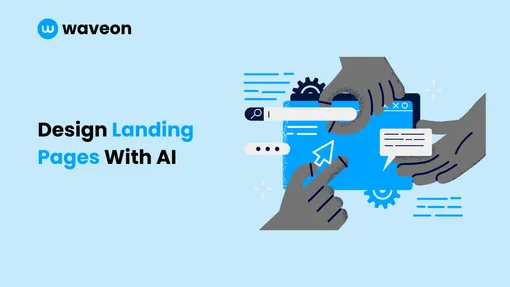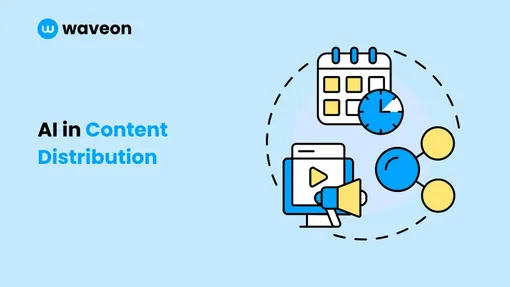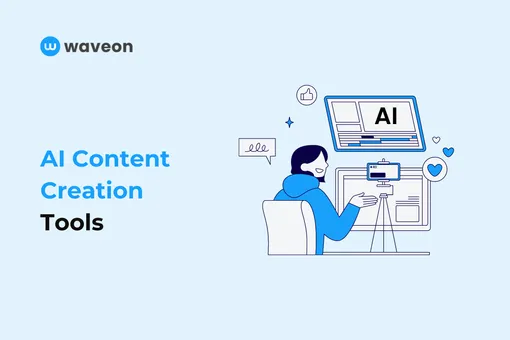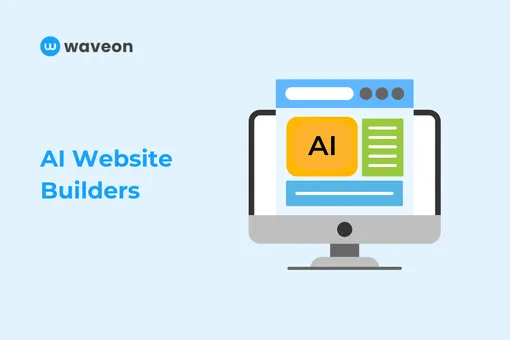Marketing
How to Build Newsletter Marketing Strategy in 2024
Ekta Swarnkar
3/5/2024
0 min read
TABLE OF CONTENTS
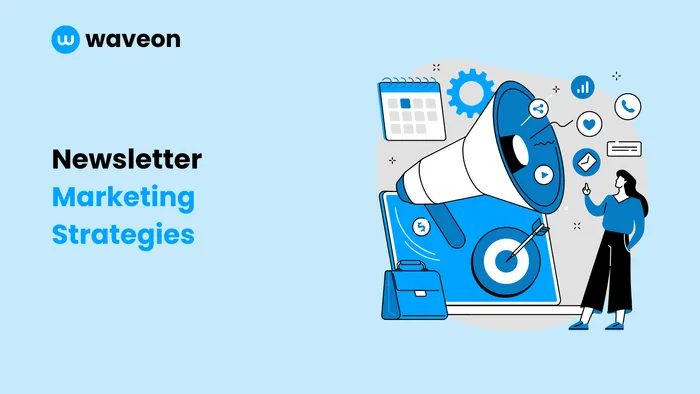
Marketing a newsletter isn’t as easy as adding subscribers to an email list. Professionals are industry experts, and convincing these experts to become subscribers needs a different newsletter marketing strategy.
In addition to being a known expert in your field and having a newsletter worth reading, there are many newsletter marketing strategies that, when used correctly, can help you drive highly engaged subscribers consistently.
So, how do you create a successful newsletter marketing strategy?
This post gives you practical methods to market a newsletter with examples and creative ideas that work in 2024.
But before we dive into strategies, let’s make sure your newsletter is worth marketing.
2 prerequisites before marketing a newsletter
Marketers are often ROI-focused and picky about the resources they invest their time in. Is your newsletter worth their time investment? Is it valuable enough for them to share it with others?
At the same time, what’s your reason for starting a newsletter? Once you’re clear about these things, identifying the right marketing channels and strategies becomes much easier.
#1. Decide your newsletter goals
What do you want to achieve with your newsletter? Yes, driving traffic, generating leads, and increasing conversions are common, but these aren’t the primary reasons.
Your newsletter will target marketing professionals well-versed in basic email marketing techniques. They can smell promotional emails miles away, so if your newsletter’s sole purpose is to drive conversions and ask subscribers to sign up for your product/service—you’re doing it wrong!
Identify the primary goal of your newsletter. It can be any of the following:
Establish yourself as the thought leader
Build brand awareness in your industry
Network with industry experts
Building a repository of sales collateral
Retaining existing customers & educating them
Building a community
An example is Cognism’s newsletters, which are intended to get subscribers' engagement. Cognism doesn’t focus on driving leads. Their goal from marketing channels is to drive engagement and establish themselves as industry leaders.

When you’re more focused on building a genuine newsletter that adds value to your subscribers, secondary goals like driving traffic, generating leads, and increasing conversions come as add-on benefits.
#2. Work on your newsletter engagement
Being relevant is greatly celebrated in marketing—if you’re relevant, people will give you their time, attention, and money. But, if you’re not, people will find your replacement.
And being relevant can have different meanings:
Being clear about your goals and objectives
Being an industry expert with controversial opinions
Being engaging/entertaining/inspiring
It’s either you focus on an extremely niche topic that you’re only one of the few talking about. Such as the newsletter by CoinDesk on applications of Bitcoin in business:

Or you become the go-to expert in a topic such that your newsletter becomes a learning resource for other experts. For example, Growth Memo by Kevin Indig, an SEO expert and growth advisor, with clients like Shopify, G2.com, and Atlassian.
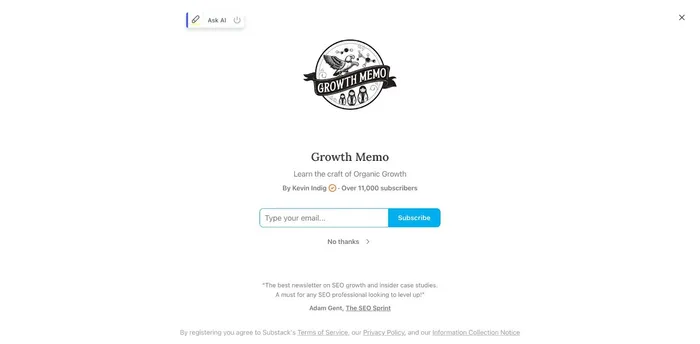
The newsletter is so powerful that it gets Kevin invitations to speak at exclusive events, webinars, and podcasts as an SEO expert—an excellent opportunity to promote your brand.
Ask yourself: Is my newsletter relevant to my target audience? If the answer is no, start from the basics.
First, define your target audience and clearly articulate the exact persona you want as your subscriber. Figure out their job, demographics, challenges, goals, skills, interests, desires, etc., and create a mental image for reference.
Second, identify the newsletter topics that will be highly relevant to your readers. Not sure what to write about? Pick the job title and identify the day-to-day challenges your audience faces.
If you’re a SaaS owner/service provider, identify topics your product or service solves for occasional promotions. Then, create a content calendar and fill it with relevant topic ideas.
Finally, focus on your newsletter engagement and appearance. Write compelling subject lines. Write valuable newsletters. Invite experts for interviews. Add images, videos, GIFs, etc. Add unique, fun sections to make it engaging. Imagine getting voice recommendations in a newsletter. Well, it’s a segment in Mutiny’s newsletter:

Once you’re convinced your newsletter is worth your audience’s reading, follow the strategies to market it to attract them.
Newsletter marketing strategies that work in 2024
Below, we’ll discuss six newsletter marketing strategies. Feel free to jump to specific ones:
#1. Create irresistible lead optins
Would you give away your email if Netflix offered you three months of a free premium subscription? I will, and I’m sure you will, too.
That’s the power of freebies with irresistibly good value. Companies use freebies such as free premium trials, in-depth courses, and templates to invite readers to access them in exchange for newsletter subscriptions.
As soon as you scroll through any blog post on Semrush, the popup invites you to create a free account. It also mentions 55+ free tools, so we gladly give away our emails.
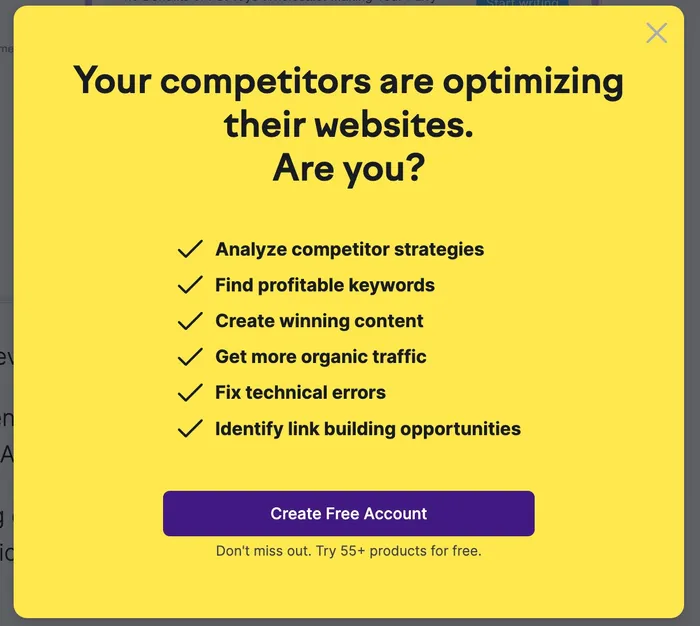
Some companies offer toolkits and guides to give subscribers something of high value. Take Mailmunch’s toolkit as an example:

Identify a common struggle of your target audience and create a freebie to give in exchange for their emails. If you have a product, offer a free trial or free account. Or, if you’re a service provider, provide a free consultation session or audit.
#2. Create & publish email signup forms
What’s your marketing asset that gets the most traffic from your target audience? Your website. So, isn’t it where you’ll get the most subscribers from? Obviously!
Start by creating signup forms if you haven’t. Your email marketing provider provides templates, so start with those. What if you already have email signup forms, but the subscription rate is still low?
It’s because your lead forms are hidden—you’ve kept them inside a closet, buried and invisible to your subscribers. If you have a lead form with an irresistible offer, show it to everyone. As soon as you try to leave OptinMonster’s website, you get a 55% discount signup form.
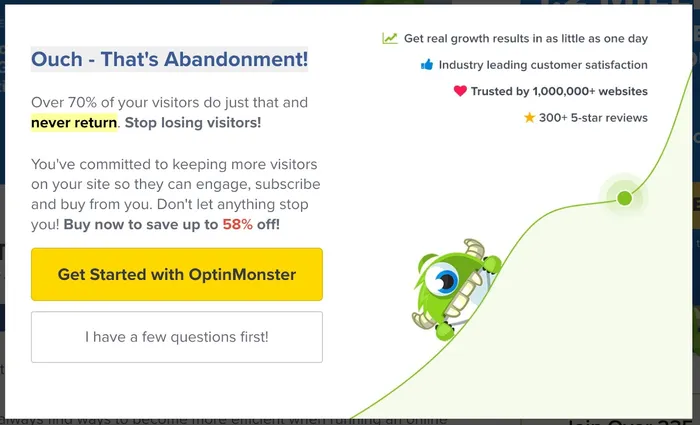
In fact, HubSpot promotes signup forms three times in each of its blog posts: Introduction, conclusion, and pop-up.
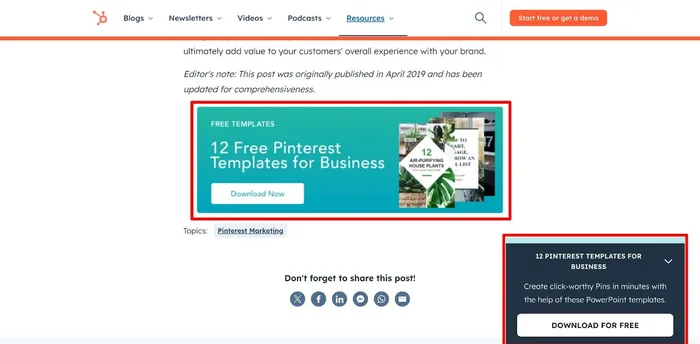
HubSpot can do this because it offers a different freebie for each blog post. You don’t have to do it if you feel like overdoing it, but include an email signup form on your most visited pages.
#3. Create LinkedIn posts about your newsletter
After your website, where else can you find your target audience? If you’re in the industry, they’re engaging with other professionals on LinkedIn.
Are you promoting your newsletter on LinkedIn? If not, start doing it now. Not in the usual way, though. Make your newsletter promotion LinkedIn posts highly valuable to the LinkedIn audience by giving away entirely whatever you covered in the newsletter. Finally, mention that you share insights regularly and add your newsletter signup link in the comments section.
This is a non-promotional way of promoting your newsletter. Just like Aarushi Singh, Sr. Content Marketing Specialist at UScreen, does in her LinkedIn posts:
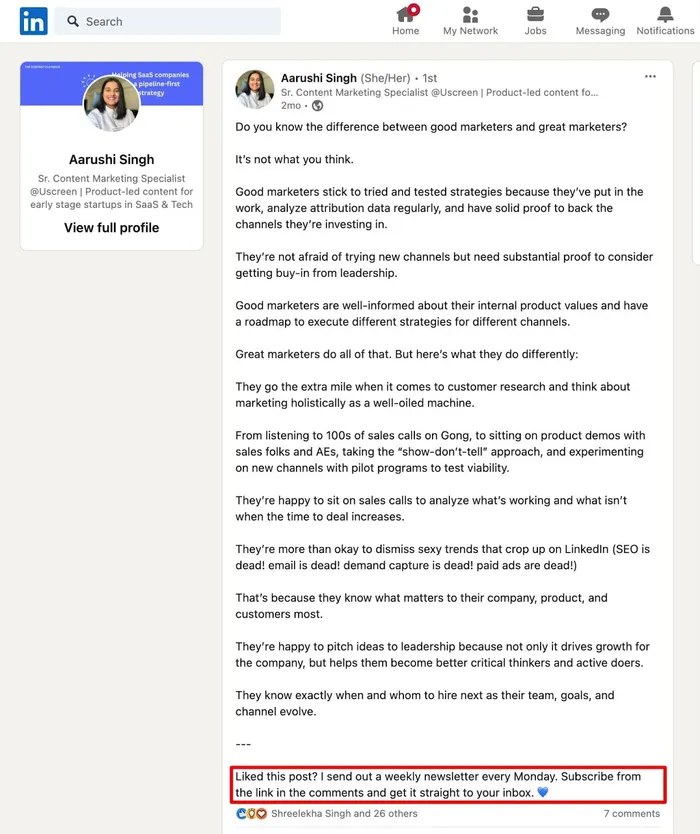
If you post actively on LinkedIn, then straightforward promotion from time to time won’t hurt your authority. It’s because your audience already knows you share valuable content, and the newsletter will add value, too.
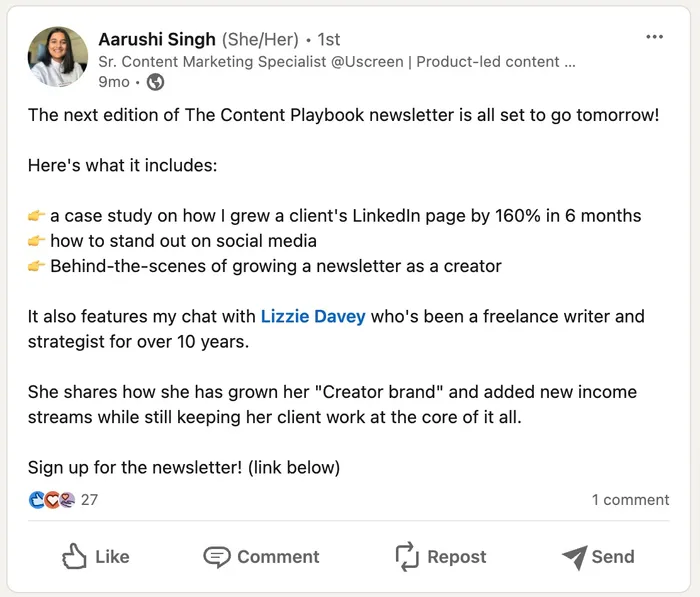
Whichever method you choose, prioritize building a presence on LinkedIn where your target audience is. It’s going to make newsletter promotion as well as getting more customers easy.
#4. Share your newsletters on Slack communities
Slack (or online) communities are great places for marketing professionals to build connections, share day-to-day concerns, find solutions, and, most importantly, promote their newsletters/services/products naturally.
Not sure how to do it naturally? See how Brendan Hufford, Founder of Growth Sprints, mentions his newsletter by answering a question based on his experience.

It’s easy to mention newsletters on Slack communities because people ask for recommendations. When people do, you can say your newsletter or let others do it:
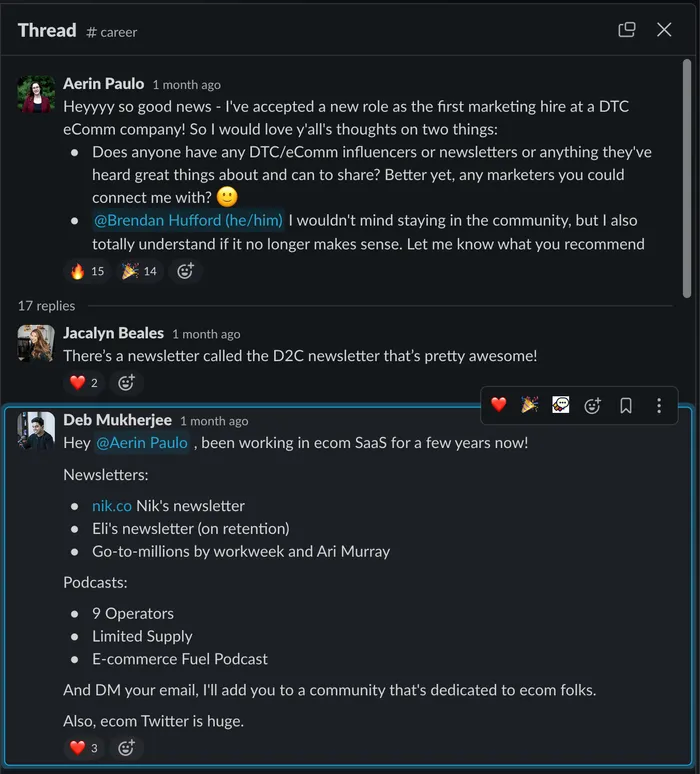
Sometimes, random conversations lead to mentioning newsletters. In this case, the question was to mention six-figure female entrepreneurs, and someone said Tracy Wallace and her popular newsletter Contentment:

Of course, if you want others to promote your newsletter, you must ensure it’s worth sharing and popular. But if you’re new and don’t have many advocates to talk positively about it, you can promote it yourself:

The key to promoting your newsletter on Slack communities is to watch for conversations. Acting naturally and participating in discussions will give you many chances to talk about your newsletter.
#5. Incentivize subscribers to share your newsletter
To increase newsletter subscribers, start incentivizing current subscribers to bring more members. You can create a newsletter referral program using platforms like Partnero by giving subscribers something in exchange for successful referrals, such as an Amazon gift card or cash.

Or create a valuable resource (ebook, template, course) or physical item like a coffee mug or T-shirt and share it for successful referrals:
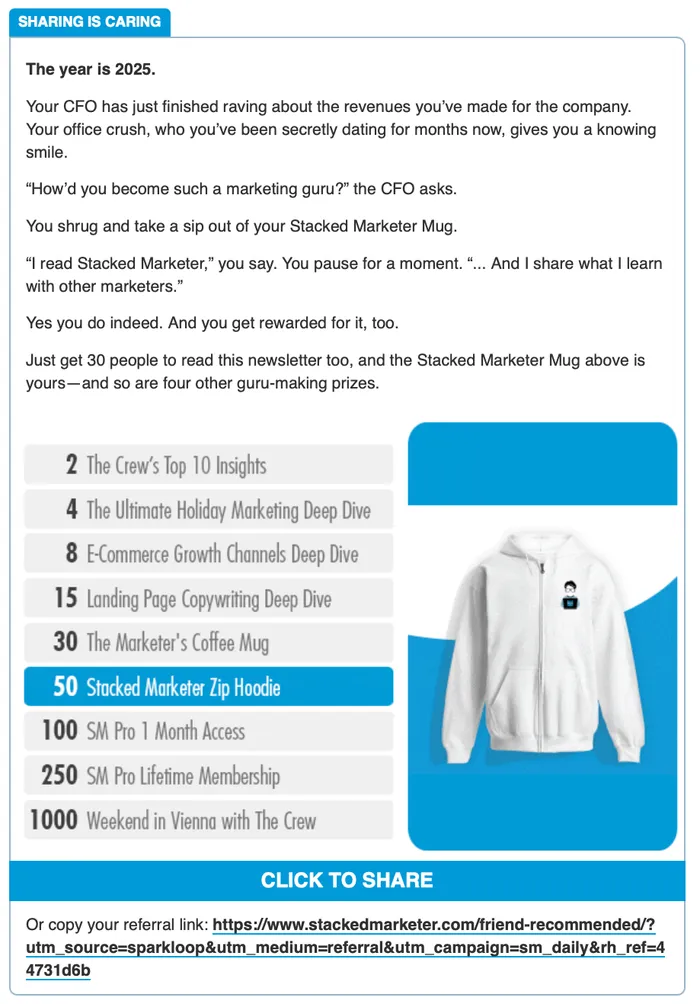
Build a referral system that adds enough value to subscribers willing to refer it to their friends. And, of course, your newsletter has to be worth recommending to others.
#6. Collaborate with influencers in your industry
Influencers are known personalities in your industry with a solid audience base, and collaborating with them presents a beautiful opportunity to attract loyal subscribers.
Take Cognism as an example. They worked with influencers like Ryan Reisert (31k LinkedIn followers) and Morgan J Ingram (161k LinkedIn followers) to create organic content around Cognism to build brand recognition.
Ryan targets sales persona for Cognism:

And Morgan mostly interviewed growth sales leaders, marketing teams, and revenue ops team members for Cognism:
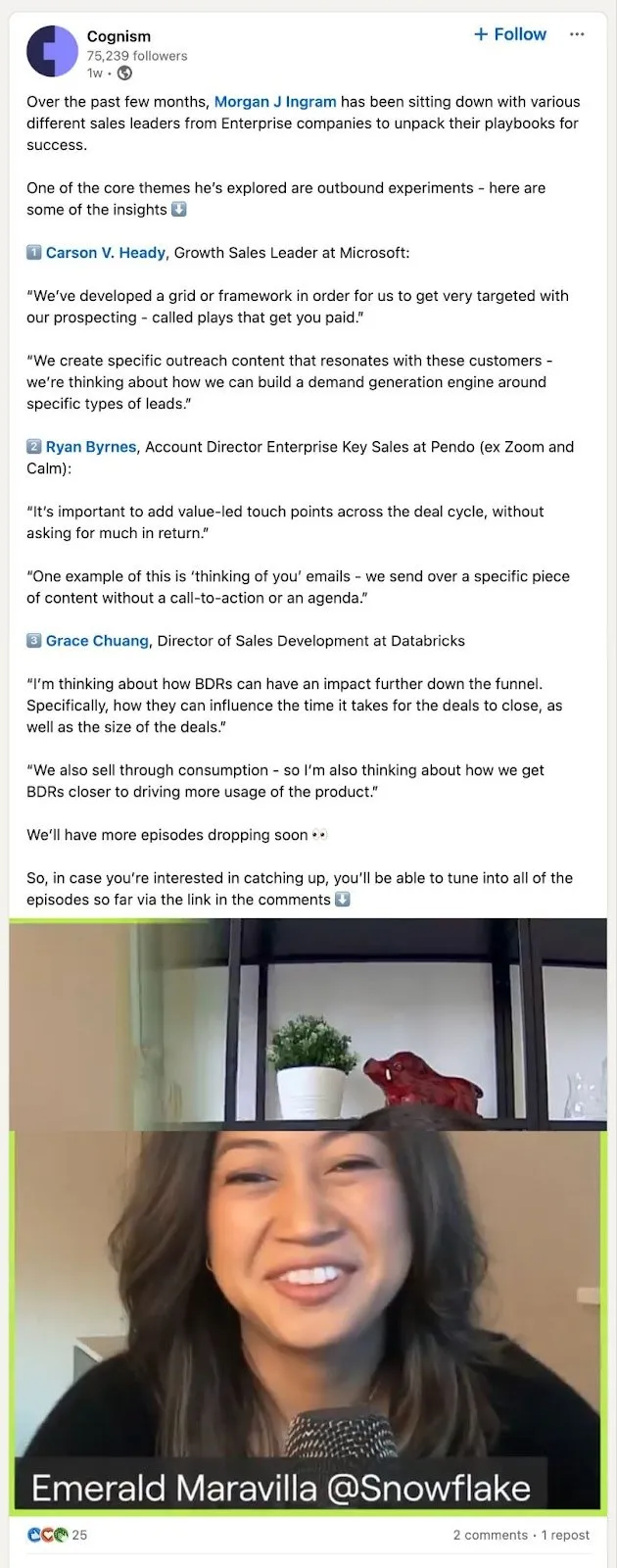
What did Cognism get out of these partnerships? Brand recognition, expert position, and many subscribers (also customers) from influencers' audience.
To start collaborating, identify influencers with the same target audience as you want and ensure they’ve built it organically.
Add creativity to your newsletter marketing strategies
Getting more newsletter subscribers isn’t a one-time thing. It’s a continuous process that requires you to think of unique ways to market your newsletter.
The good news is that with these six advanced newsletter marketing strategies, you can keep adding new subscribers without being too obvious.
Of course, these strategies only work when your newsletter is worth sharing. So, not only in marketing, but also spend enough time writing a valuable newsletter that people can’t stop raving about.




